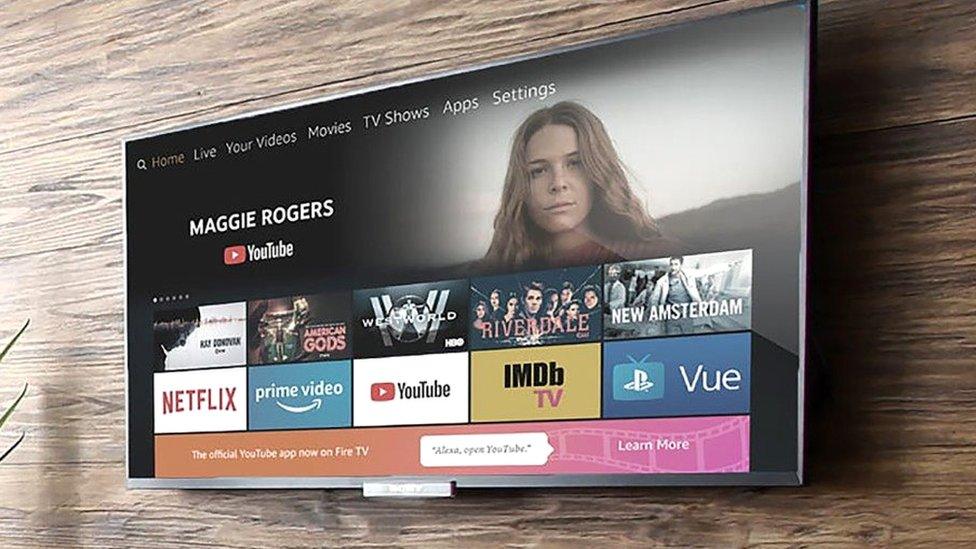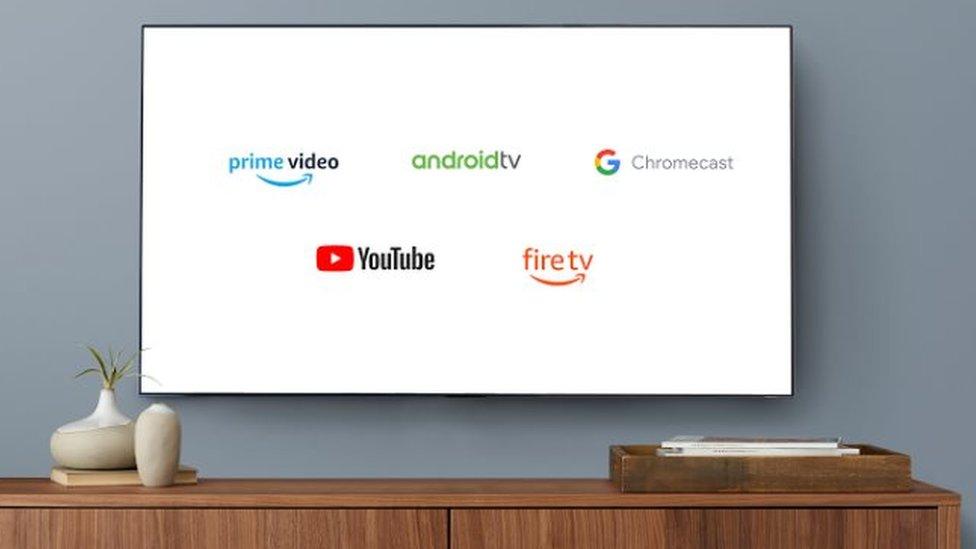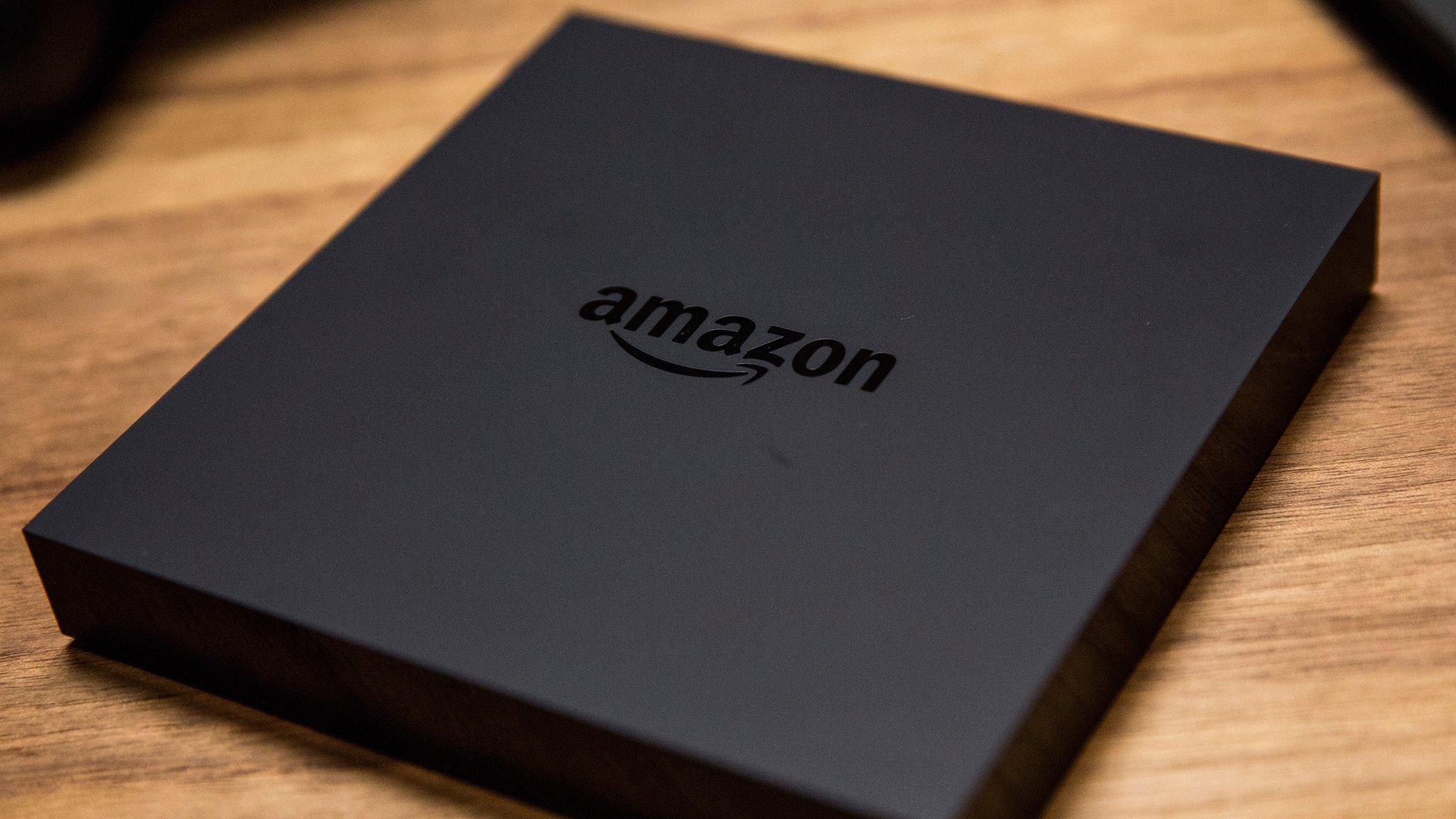Amazon and Google deliver on TV peace deal
- Published

YouTube is now being promoted on Fire TVs...
Amazon and Google have drawn a line under a long-running dispute by providing their on-demand video services to each others' TV platforms.
Amazon's Prime Video app, external is now available on Chromecast dongles and is coming to Android-powered televisions and set-top boxes.
And Google has launched an official YouTube app, external for Fire TV devices, and is promising a child-centric YouTube Kids edition later in the year.
It ends a stand-off that began in 2015.
The dispute started when Amazon refused to sell Google's Chromecast products on its online store.
It then escalated in 2017 when the search giant first pulled YouTube off Amazon's Echo Show smart screens and then did likewise with the Fire TV range.
The first evidence that the spat might be resolved came in December 2018 when Amazon began stocking Chromecast products again.
Then in April 2019, the two sides confirmed their feud was at an end after signing an agreement to provide each other access to their respective video services.

...and Prime Video can be found on Android TV screens and set-top boxes
There does, however, appear to be a notable omission.
Today's press releases make no mention of YouTube being returned to the Echo Show, nor do they mention Amazon Prime coming to Google's rival Nest Hub smart displays.
Likewise, Amazon still does not sell any of Google's smart speakers or screens although it does stock other Nest-branded devices.

Well I'm glad that's (mostly) over. This was a petty, anti-consumer tit-for-tat that helped neither company.
What's most curious is how it took so long to resolve - time in which, you'd imagine, customers looked to other services that could offer both Prime Video and YouTube on the same platform, such as Roku or Apple TV.
Since the row flared up towards the end of 2017, Amazon's position in on-demand video has become considerably stronger - and I think that's a big factor in this apparent truce.
Amazon hasn't said how many users its Prime Video service has, but it's available to all of its Prime members, of which there are now more than 100 million.
They enjoy - award show judges will tell you - some of the most talked-about television being produced today. And so it was becoming increasingly risky for Google to not have Prime Video available on the Chromecast.
The same was true in reverse. The lack of a YouTube app on Amazon's TV platform - FireTV - was a significant handicap for Amazon, and I imagine Google wasn't too thrilled about missing out on reaching the 30 million-or-so FireTV users either.
- Published29 December 2017

- Published6 December 2017
